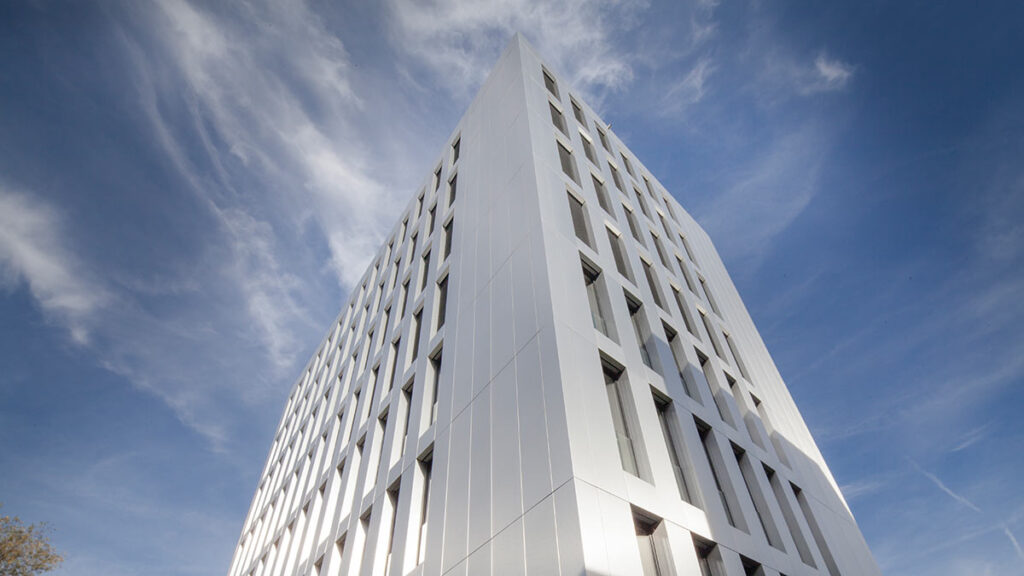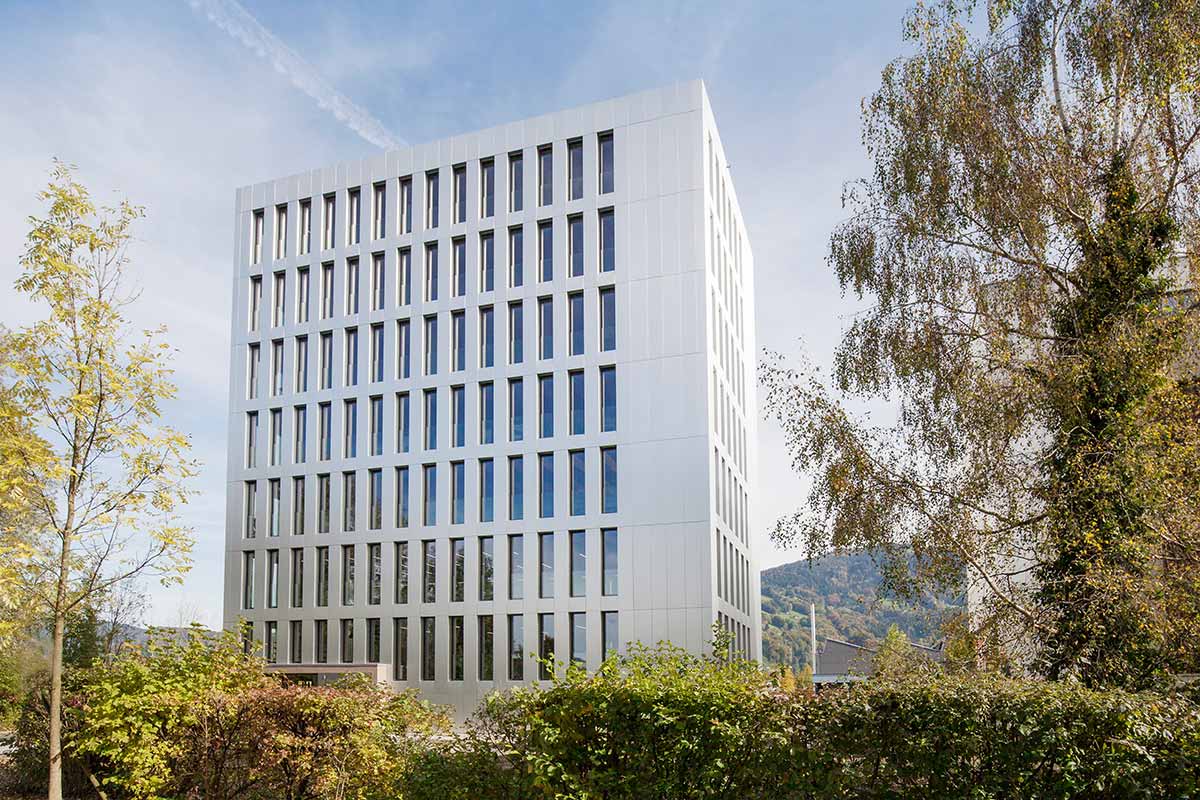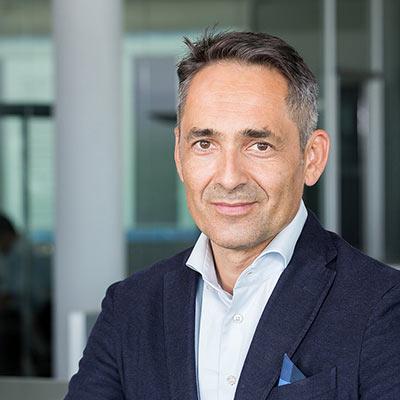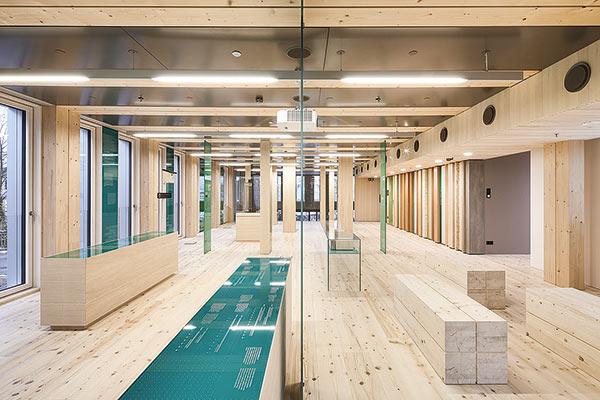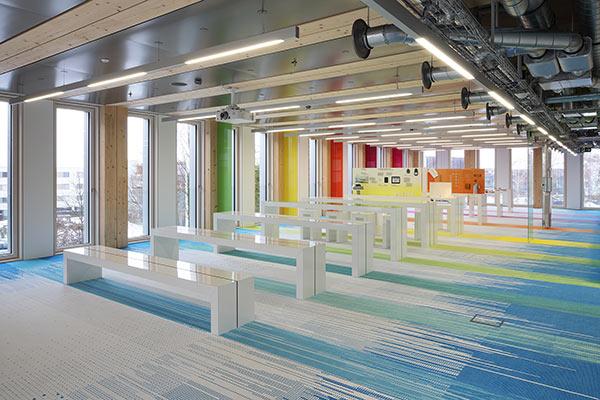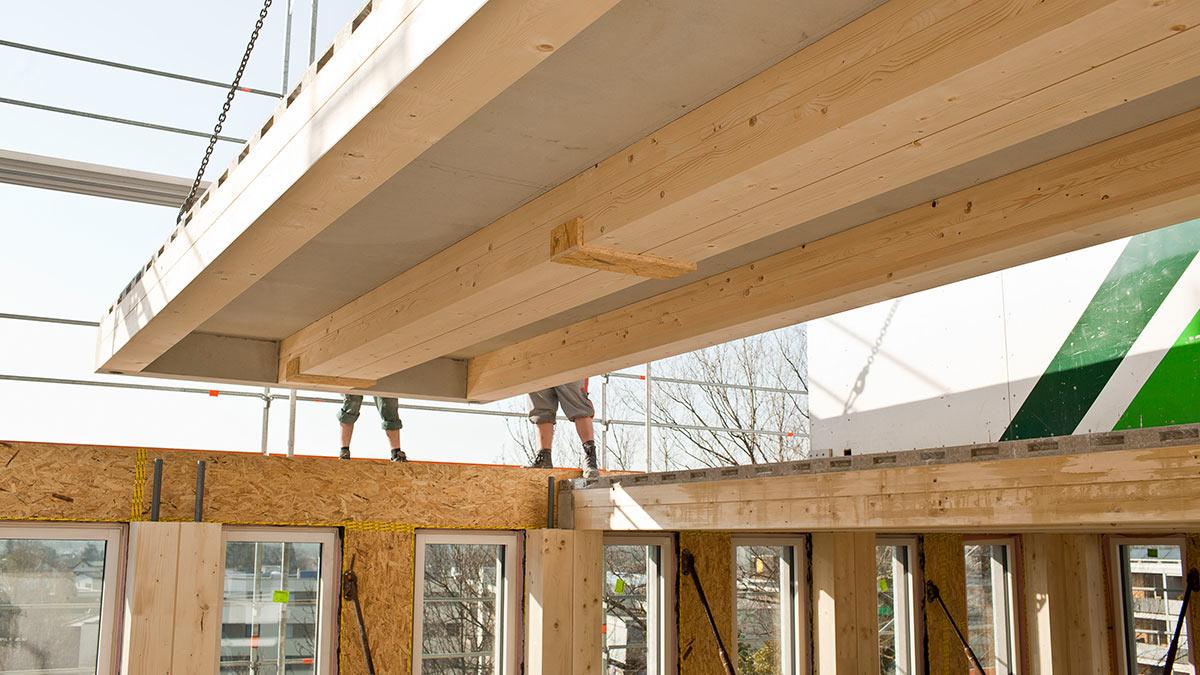A timber high-rise goes into production
The Life Cycle Tower One was the first timber high-rise in Austria and the prototype for a new type of serial construction. CREE founder Hubert Rhomberg explains the green building concept and why we have to learn to think in lifecycles.
The building shell was erected in just eight days and the entire construction took a year to complete. The Life Cycle Tower One in Dornbirn, western Austria, was the first timber building to reach the height considered a high-rise in Austria and to do so while meeting passive building standards. It is intended as a prototype for a new and sustainable method of building using a modular system. A kind of environmentally friendly prêt-à-porter of architecture sold under the CREE label founded in 2010 by Hubert Rhomberg.
Environmentally friendly building-block system
The visionary entrepreneur had set himself the goal of completely rethinking the construction process while improving the global climate footprint in the process. Since then, the multi-storey timber building from the province of Vorarlberg has gone into production, with spin-offs distributed around the globe. Timber Pioneer, the first office building to use this sustainable construction method, is now being built in Germany’s financial metropolis, Frankfurt.
The timber hybrid construction method allows for a carbon footprint that is 90 percent lower than traditional construction methods, as promised by the Rhomberg Group subsidiary. And by collaborating with local partners, the regional trades and timber industry are supported too. Moreover, prefabricating the composite timber elements reduces construction time by half and less noise pollution and rubbish are produced by the building site itself.
The return on investment of a green building and why we have to learn to think in lifecycles are explained by Hubert Rhomberg in the following interview.
Timber Pioneer is Frankfurt’s first timber hybrid office building. What is the significance of this project set in the heart of Germany’s financial metropolis?
HUBERT RHOMBERG: It’s a highly visible sign of a new era. One with a new and genuinely sustainable way of thinking and of definite, meaningful action. It indicates the companies that are meeting the challenges of the future and using them to build their own prosperous future.
The timber hybrid construction method reduces resource consumption and carbon emissions. Why is this so important?
What makes it so important is that we’re tackling the problem at its roots. Namely our vast resource consumption, the energy bound up in this and the associated carbon emissions. Cement alone is responsible for eight percent of global carbon emissions.
The demand for green real estate is exploding and won’t be satisfied for a long time to come.
Hubert Rhomberg, founder and CEO of CREE
What benefits does this construction method offer companies that rent space here?
The work environment is demonstrably healthier. You can see, smell and touch the wood used in the office spaces. Wood has a positive impact on health, well-being and motivation – and thus ultimately on productivity too. And the companies can point to a significantly reduced carbon footprint. It is a clear message to all stakeholders.
Is sustainable construction at odds with a building’s profitability?
Nowadays it is quite the opposite. Anyone investing in a building today intends it to last 100 years and be written off over 30 years. There is no interest in outdated technologies and modes of thinking. Well, not if people are looking for a lucrative investment, anyway. We’re now achieving greater levels of profitability with these genuinely green real estate products – and not just in terms of rental income, but when it comes to recycling too. The demand for green real estate is exploding and won’t be satisfied for a long time to come.
The shift towards sustainability in the construction industry is a slow process, however. Why is this?
The construction industry is very slow to adapt, there are many different players involved and there’s little transparency. In the planning and construction sectors there is also a lack of knowledge about and experience with new technologies and materials like wood. With CREE, we’ve developed a platform concept that allows us to share the experiences of all partners very quickly and efficiently. This is why we’re now experiencing very rapid movement throughout the industry. It would take too much time and money for anyone to independently develop and learn everything for themselves.
Advocates of the cradle-to-cradle principle are promoting the use of demountable materials. Is this principle embraced in the CREE construction method?
That is precisely what it is based on. Dismantling and re-using building components can only be ensured by our systematized approach and the digital twin. This is only possible if the approach is systematically adhered to and the planning is left to us, however. Anyone doing it themselves must be prepared for a long learning journey. There’s always a learning curve with the first project. The digital twin lets me simulate everything beforehand.
In your book “Construction 4.0”, you champion the goal of an emissions and waste-free future. What are the most important steps in getting there?
The goal is to reduce the materials used during construction to a minimum. The less energy used in the process, the lower the carbon emissions. We have to learn to think in lifecycles as well. To have an educational effect in the industry, in future no planning permission should be issued or construction start authorized until a corresponding materials schedule complete with dismantling instructions is submitted.
Is it true that you want to become a kind of “Amazon of building” with CREE?
We want to use our platform to create the world’s biggest building collective with the largest construction volume and greatest impact. The prerequisites for this are provided by digitalization. But the goal is not a company with traditional shareholders. Instead, it is a collective for the benefit of all.
Interview: Gertraud Gerst
Translation: Rosemary Bridger-Lippe
Photos: CREE GmbH
